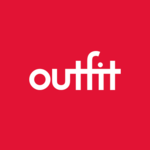Description

Hootsuite

Outfit
Comprehensive Overview: Hootsuite vs Outfit
Overview of Hootsuite and Outfit
a) Primary Functions and Target Markets
Hootsuite:
-
Primary Functions: Hootsuite is a social media management platform that allows individuals and businesses to manage multiple social media accounts in one place. It offers features for scheduling posts, tracking social media analytics, monitoring conversations, responding to messages, and collaborating with team members. Hootsuite supports various social media networks including Facebook, Instagram, Twitter, LinkedIn, and Pinterest among others.
-
Target Markets: Hootsuite targets a wide range of users from small businesses and startups to large enterprises. It's also popular among digital marketing agencies, freelancers, and social media managers who require a robust tool for handling multiple client accounts.
Outfit:
-
Primary Functions: Outfit is a brand management and marketing production platform that focuses on automated brand compliance. It streamlines content creation by providing customizable brand templates, ensuring that every piece of marketing material produced is on-brand. Outfit often integrates with existing design tools and other marketing platforms to automate and scale marketing operations.
-
Target Markets: Outfit primarily targets medium to large enterprises that have strict branding guidelines and need to produce large volumes of marketing materials. Industries include finance, education, real estate, and retail, where consistent branding across various channels is vital.
b) Market Share and User Base
-
Hootsuite: As of the latest updates, Hootsuite is one of the leading social media management platforms globally, with millions of users, including many Fortune 1000 companies. Its market dominance comes from its comprehensive feature set and its ability to cater to both small-scale users and large corporations.
-
Outfit: Outfit operates in a more niche market compared to Hootsuite, focusing specifically on brand and marketing compliance solutions. While specific market share statistics are less commonly reported for Outfit, they are known in the enterprise sector for organizations that require streamlined, centralized brand management.
c) Key Differentiating Factors
-
Functionality Focus:
- Hootsuite centers on social media management and analytics, offering a broad array of tools to engage audiences and measure the impact of social media activities.
- Outfit concentrates on brand compliance and automated content production, ensuring consistency across all marketed and distributed materials.
-
User Experience:
- Hootsuite provides a dashboard environment designed for real-time engagement and data analysis, suitable for managing online presence in various social media channels.
- Outfit offers a template-driven approach that simplifies design processes and ensures brand uniformity, emphasizing ease of use for non-designers in maintaining brand standards.
-
Integration and Ecosystem:
- Hootsuite integrates with a wide range of third-party tools, enhancing its versatility in managing social media relations, analytics, and marketing solutions.
- Outfit typically links with enterprise-level solutions, offering customization and scalability tuned to businesses requiring strict adherence to branding guidelines.
-
Market Niche:
- Hootsuite is more widely used across diverse industries due to its broad functional applications in social media and digital marketing.
- Outfit serves a specialized market focused on strict brand governance, making it a preferred choice for businesses where brand consistency is crucial across multiple outputs.
In summary, Hootsuite and Outfit serve different yet sometimes overlapping needs within the marketing sphere. Hootsuite caters more to social media engagement and analytics, while Outfit is tailored for maintaining brand consistency through automated production solutions. Their choice depends heavily on the specific marketing and brand compliance needs of the organization.
Contact Info

Year founded :
2008
Not Available
Not Available
Canada
Not Available

Year founded :
2020
Not Available
Not Available
United States
Not Available
Feature Similarity Breakdown: Hootsuite, Outfit
When comparing Hootsuite and Outfit, it's important to note that while they both serve marketing teams, they focus on different aspects within that space. Below is a feature similarity breakdown for Hootsuite and Outfit:
a) Core Features in Common
-
Social Media Management:
- Both platforms cater to marketing teams by facilitating the management of social media content. This includes scheduling and publishing posts across various social media platforms.
-
Analytics and Reporting:
- Both Hootsuite and Outfit provide analytics and reporting functionalities that help marketers understand the performance of their content and campaigns.
-
Collaboration Tools:
- Hootsuite and Outfit offer features that enhance collaboration among team members. This includes the ability to work on content together and streamline communication processes.
b) User Interface Comparison
- Hootsuite:
- Hootsuite is known for its dashboard-style interface that allows users to manage multiple social media accounts simultaneously. The interface is structured around streams and tabs, making it easy to monitor and interact with various social platforms in one place.
- Outfit:
- Outfit tends to focus more on brand management and asset creation, offering a more design-oriented interface. Its UI is optimized for ease of use in creating and managing brand-compliant marketing materials.
c) Unique Features
- Hootsuite:
- Extensive App Integrations: Hootsuite offers a wide range of app integrations, including various social networks and useful tools like Dropbox, Google Drive, and Canva.
- Social Listening and Engagement: Advanced features for social listening and engaging with your audience are available, making it valuable for businesses that need to maintain a strong social media presence.
- Outfit:
- Brand Management and Compliance: Outfit is particularly unique in its focus on brand management, ensuring all marketing materials are on-brand. This includes templates and approval processes to maintain brand integrity.
- Automated Asset Creation: Outfit provides robust automation capabilities for creating marketing assets at scale, which can be particularly beneficial for large organizations with strict branding guidelines.
Conclusion
While Hootsuite and Outfit share some overlapping features related to social media and marketing management, they serve different niches within the marketing domain. Hootsuite excels in social media management and engagement, whereas Outfit is tailored towards maintaining brand consistency and creating marketing assets efficiently. The key to choosing between them often lies in identifying whether a business’s needs are centered more on social media or on brand-focused content creation.
Features

Not Available

Not Available
Best Fit Use Cases: Hootsuite, Outfit
Hootsuite
a) Best Fit Use Cases for Hootsuite:
-
Businesses with a Strong Focus on Social Media Strategy:
- Hootsuite is ideal for businesses that are heavily reliant on social media for marketing, customer engagement, and brand awareness. It allows centralized management of multiple social media accounts and channels.
-
Medium to Large Enterprises:
- Especially useful for larger organizations with complex social media strategies. Hootsuite's robust analytics and team collaboration features support the needs of sizable marketing and PR teams.
-
Marketing Agencies:
- Perfect for agencies managing social media for multiple clients. Hootsuite enables streamlined handling of various client accounts and reporting metrics without logging in and out of different platforms.
-
E-commerce & Retail Brands:
- Businesses aiming to drive sales through social media can leverage Hootsuite’s advanced analytics and social listening tools to optimize their campaigns and engagement tactics.
-
Nonprofit Organizations:
- These organizations can benefit from Hootsuite’s scheduling and campaign management features to enhance their community engagement and fundraising efforts through social media outreach.
d) Catering to Industry Verticals and Company Sizes:
- Scalability: Hootsuite is scalable, serving both small businesses with basic features and large enterprises needing advanced functionalities.
- Industries: While beneficial across various industries, Hootsuite is particularly advantageous for sectors with heavy social media reliance like fashion, media, and technology.
Outfit
b) Best Fit Use Cases for Outfit:
-
Brand-Consistent Marketing:
- Outfit excels in organizations that prioritize maintaining brand consistency across all marketing and advertising efforts. It's designed to centralize and automate brand-compliant content creation.
-
Franchises & Multi-location Businesses:
- Perfect for businesses that need to produce localized marketing materials that adhere to a central brand guideline, such as franchises and retail chains with multiple locations.
-
Large Enterprises With Complex Brand Guidelines:
- Facilitates the management of multiple brand assets and compliance with intricate brand guidelines, making it suitable for large corporations.
-
Teams Requiring Rapid Content Production:
- Suited for teams that need to generate a high volume of marketing collateral quickly, while ensuring it adheres to strict brand standards.
-
Internal Communications:
- Companies with significant internal communication needs can utilize Outfit to create consistent, on-brand communication materials for employees across departments.
d) Catering to Industry Verticals and Company Sizes:
- Enterprise Focused: Outfit is most beneficial for large to enterprise-sized companies due to its comprehensive brand governance tools.
- Industries: It is highly applicable in industries like retail, hospitality, and finance where brand consistency across franchisees or branches is crucial. It is less focused on social media management and more on comprehensive brand adherence across all forms of media and communication.
Conclusion
In summary, Hootsuite and Outfit cater to different aspects of marketing needs. Hootsuite is an excellent choice for businesses focusing on social media platform management, while Outfit serves organizations needing rigorous brand consistency and compliance. Both serve diverse industry verticals but target different company needs and sizes based on their functionalities.
Pricing

Pricing Not Available

Pricing Not Available
Metrics History
Metrics History
Comparing undefined across companies
Conclusion & Final Verdict: Hootsuite vs Outfit
To provide a conclusion and final verdict for Hootsuite and Outfit, let's look at each component systematically:
a) Best Overall Value
Determining the best overall value product depends on the specific needs of the user or organization. Both Hootsuite and Outfit cater to different aspects of marketing and branding:
-
Hootsuite: Primarily focused on social media management, Hootsuite offers comprehensive tools for scheduling, monitoring, and analyzing social media content. It is highly beneficial for organizations that prioritize enhancing their social media presence and need efficient handling of multiple accounts across various platforms.
-
Outfit: On the other hand, Outfit is designed to streamline brand management and marketing production. It excels in providing brand consistency and automating marketing resources, making it ideal for companies that need to maintain cohesive brand visuals and messaging across various formats and channels.
b) Pros and Cons
Hootsuite:
-
Pros:
- Robust social media management tools for scheduling and publishing.
- Extensive analytics and reporting features.
- Supports multiple social media platforms.
- Team collaboration and content calendar features.
-
Cons:
- Can become costly, especially for larger teams or enterprises.
- Steeper learning curve for new users.
- The interface can be overwhelming due to its multitude of features.
Outfit:
-
Pros:
- Facilitates consistent brand identity and marketing material.
- Automates content creation and distribution processes.
- Strong governance and compliance features for brand control.
- Intuitive design and easy-to-use templates for non-designers.
-
Cons:
- Less focus on social media integration compared to Hootsuite.
- May not provide the same depth of analytic tools as a social media-focused tool.
- Best suited for users with a significant amount of visual branding needs.
c) Recommendations for Users
-
Users focused on Social Media Management: If your primary requirement is managing multiple social media accounts efficiently, improving engagement, and analyzing social media metrics, Hootsuite is likely the better choice. It offers more features directly targeting social media tasks.
-
Users focused on Brand Management and Marketing Resources: If your main goal is to maintain brand consistency and automate marketing production, especially in a visual context, Outfit would be better. It offers powerful tools for creating, managing, and deploying brand assets at scale.
-
Hybrid Needs: For organizations that require features of both, consider using both tools in tandem or looking for platforms that integrate or offer overlapping features suited to your specific needs.
Ultimately, the decision should be based on the specific functional needs, budget constraints, and strategic goals of your organization. Conducting a trial of both services could provide better insight into which aligns more closely with your operational requirements.
Add to compare
Add similar companies


